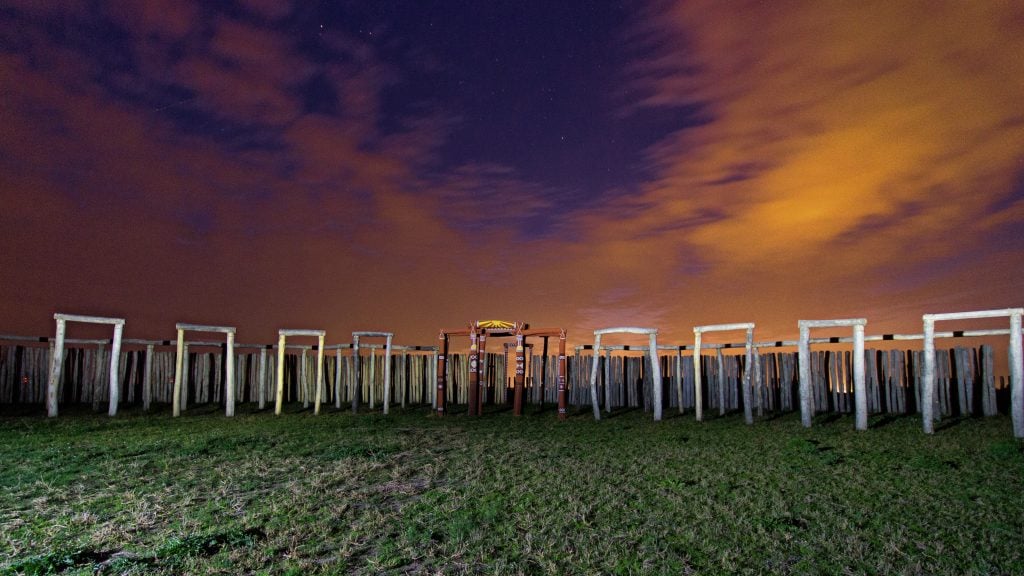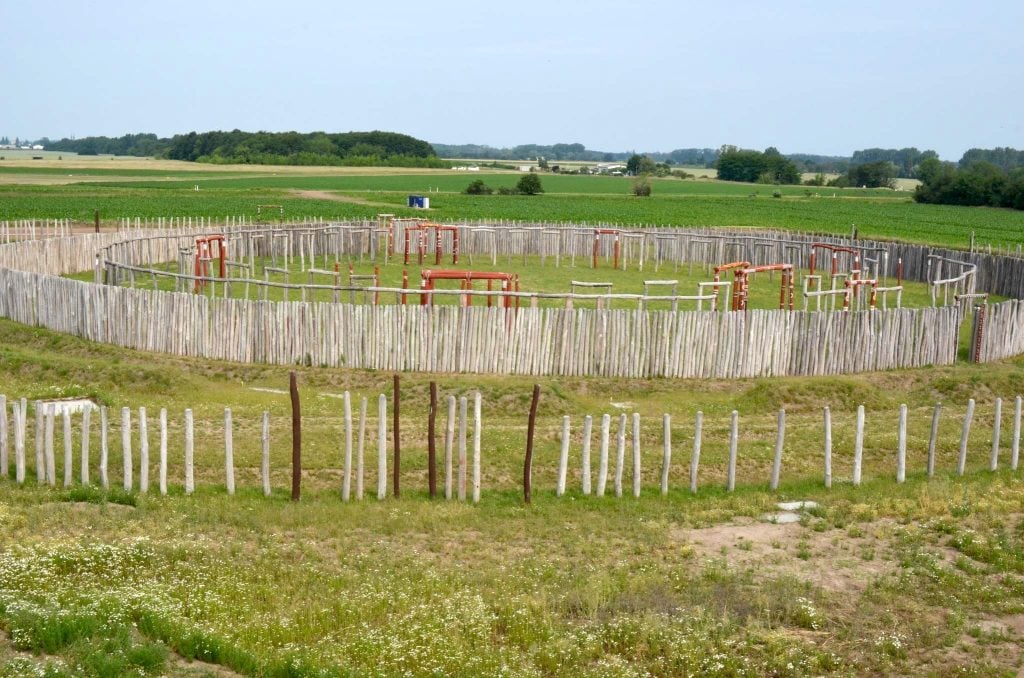Archaeology & History
Archaeologists Have Discovered Ancient Bronze Age Homes at Germany’s ‘Stonehenge’
Central Europe's largest-known settlement has been discovered at Ringheiligtum Pömmelte.

Central Europe's largest-known settlement has been discovered at Ringheiligtum Pömmelte.

Sarah Cascone

Archaeologists have found evidence of ancient dwellings at a Bronze Age site known as the German Stonehenge. Located outside the village of Pömmelte, about 85 miles from Berlin, the lost wooden ringed structure was reconstructed in 2016, and has since become a popular tourist attraction.
“It’s the largest early Bronze Age settlement we know of in central Europe,” University of Halle archaeologist Franziska Knoll told the journal Archaeology. “This must have been a really significant place.”
Knoll believes that the people who built Pömmelte, also known as Woodhenge, had close ties Stonehenge, and may have even visited the British site.
Europe’s Bell Beaker culture, named for their bell-shaped drinking vessels, first built Pömmelte around 2,300 B.C.—not long after the prehistoric British monument was constructed in 3,000 B.C. (The two monuments are roughly the same diameter.)

Ringheiligtum Pömmelte, the German Stonehenge. Photo by Diwan, Creative Commons Attribution-ShareAlike 4.0 International (CC BY-SA 4.0) license.
The Únětice culture that grew out of the Bell Beakers continued occupying the site, which experts believe may have been used in astronomical rituals. Now, we know that it was also a residential area.
Excavations on the 4,000-year-old settlement around Pömmelte have been ongoing over the last three years, conducted by archaeologists from the University of Halle and the State Office for Monument Conservation and Archaeology.
To date, 130 longhouses have been uncovered, with excavations set to continue in October, according to Heritage Daily. Archaeologists believe that Pömmelte was an active site for some 300 years before being burned down and abandoned after 2050 B.C.

Ringheiligtum Pömmelte, the German Stonehenge. Photo by Torsten Maue, Creative Commons Attribution 2.0 Generic license.
Pömmelte was discovered in 1991 thanks to aerial photography, which was illegal in East Germany prior to reunification in 1990. Using new comprehensive survey imagery, archaeologists were able to search for signs of ancient building fortifications—areas where the soil now holds more moisture, causing the crops to grow taller and greener. The photos revealed rings of postholes arranged in concentric circles where the Woodhenge once stood.
The Únětice culture may have created the Nebra Sky Disc, found 60 miles south of Pömmelte. The artifact is thought to be the oldest known depiction of the cosmos, but has recently become the subject of scholarly debate as to its true age. Originally dated to 3,600 years ago, some experts now contend it was forged during the Iron Age, a millennia later.